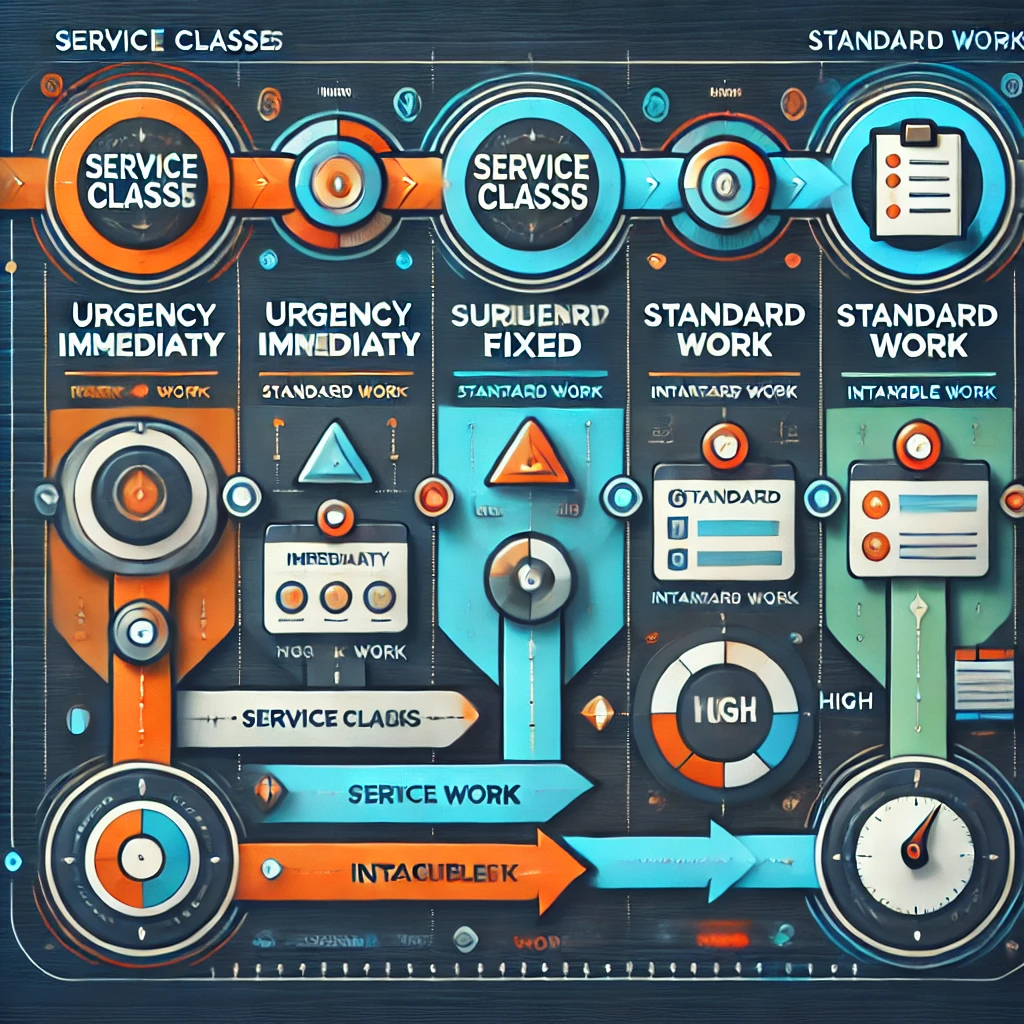
Classes of Service in Flow Management
Within organizations, priority management remains essential. Knowing how to effectively organize your workflow has become a major competitive advantage. Yet many teams struggle to differentiate urgent tasks from those that can wait, or to align their efforts with the company’s strategic objectives.
This is where Classes of Service (CoS) come in, providing a structuring framework from the Kanban method, which allows work to be prioritized according to its urgency, its impact and its Cost of Delay (CoD).
In this article, we will explore:
- What are Classes of Service and why are they essential to the proper management of your flow?
- How to follow and analyze them?
- How to associate them with SLA (Service Level Agreement) & SLE (Service Level Expectation)?
- How to associate them with a Scrum framework?
If you are looking to reduce your deadlines, balance your workload and deliver more efficiently, this article is for you!
What are Classes of Services?
Classes of Service have their origins in several areas of workflow management, including Lean, Kanban and queue management. They arise from the need to optimize the prioritization of tasks, improve the predictability of deliveries and reduce the Cost of Delay.
The concept was popularized by David J. Anderson, founder of the Kanban method for IT, who was inspired by Lean and queuing systems to define Classes of Service suitable for work management in Agile, DevOps and IT teams.
Classes of Service in Kanban are used to adjust queue management based on the Cost of Delay (CoD):
The 4 Most Common Classes of Service
Expedite:
- These items require top priority and must be addressed immediately.
- Strategy: Interrupt everything to manage them as a priority. They disrupt the standard flow.
- Cost of delay: Very high, often critical (example: production incidents).
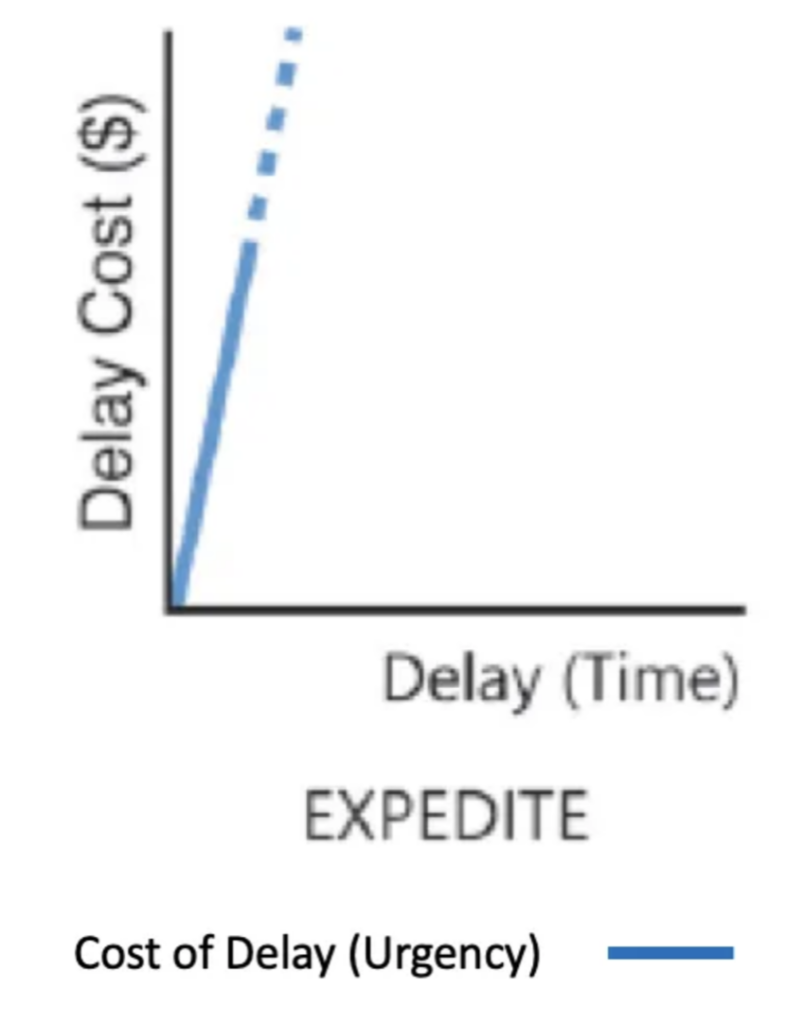
Fixed Delivery Date:
- The task must be completed before a specific deadline (example: legal obligations, marketing campaigns).
- Strategy: Planning must ensure that the deadline is met.
- Cost of delay: Variable, but often high after the deadline.
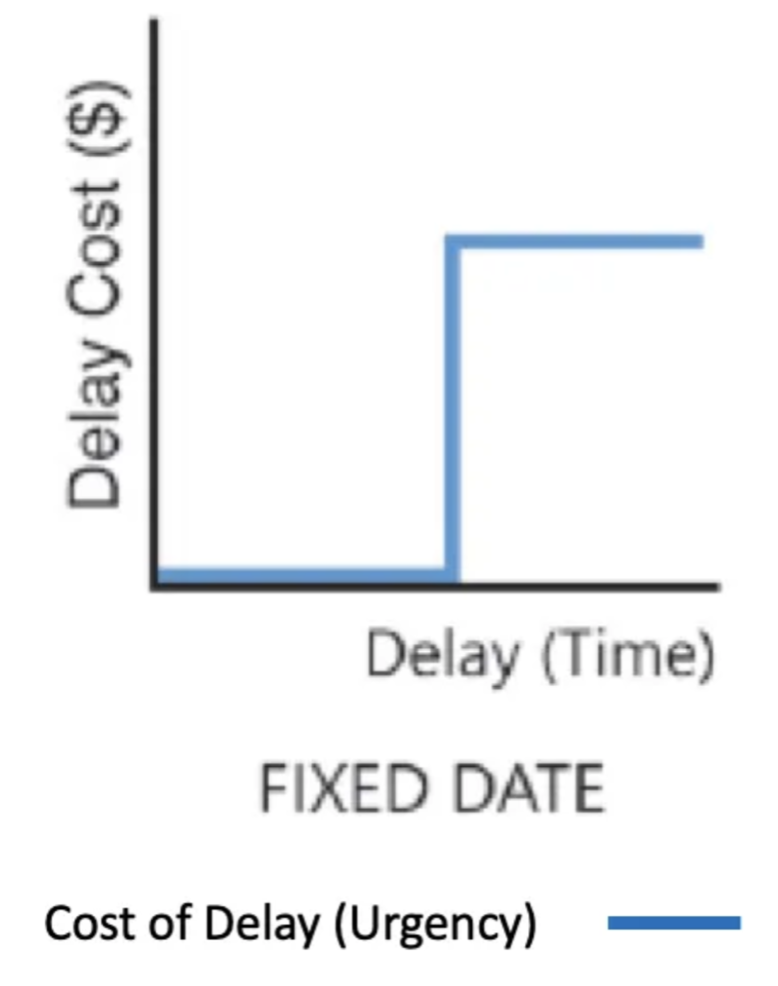
Standard:
- These are the typical tasks with moderate delay cost. They are often planned using a FIFO (First In, First Out) approach.
- Strategy: Follow the normal flow with a predictable and optimized deadline.
- Cost of delay: Moderate and linear.
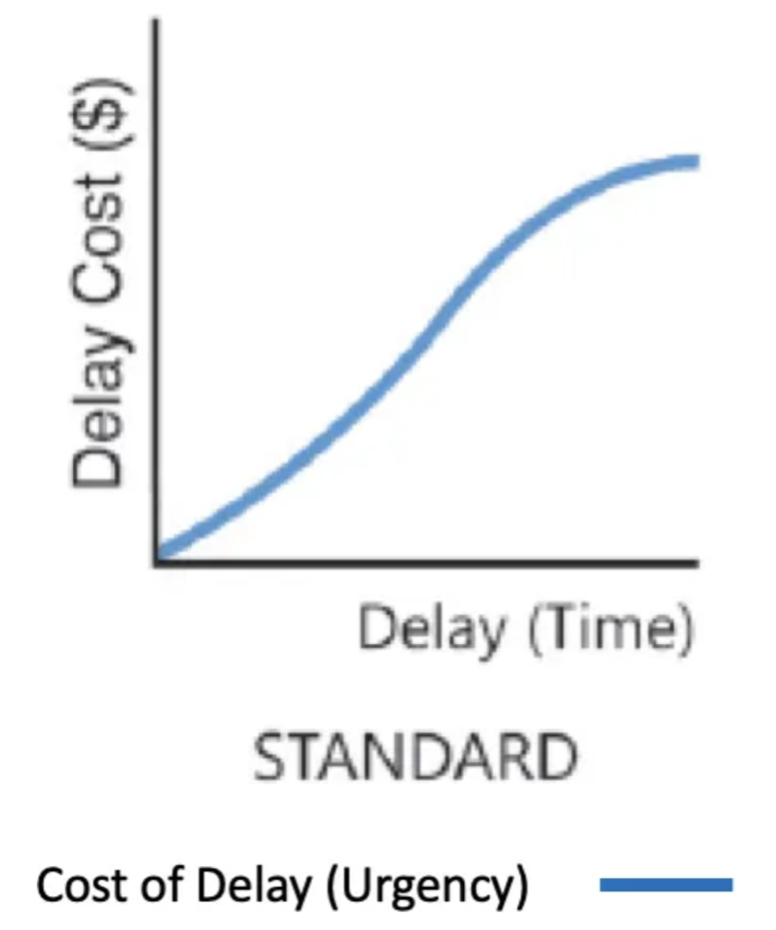
Intangible:
- These elements are not urgent, but their value accumulates in the long term (example: system optimization, reduction of technical debt).
- Strategy: They must be prioritized carefully to avoid them being continually pushed back.
- Cost of delay: Low in the short term, but can become significant in the long term.
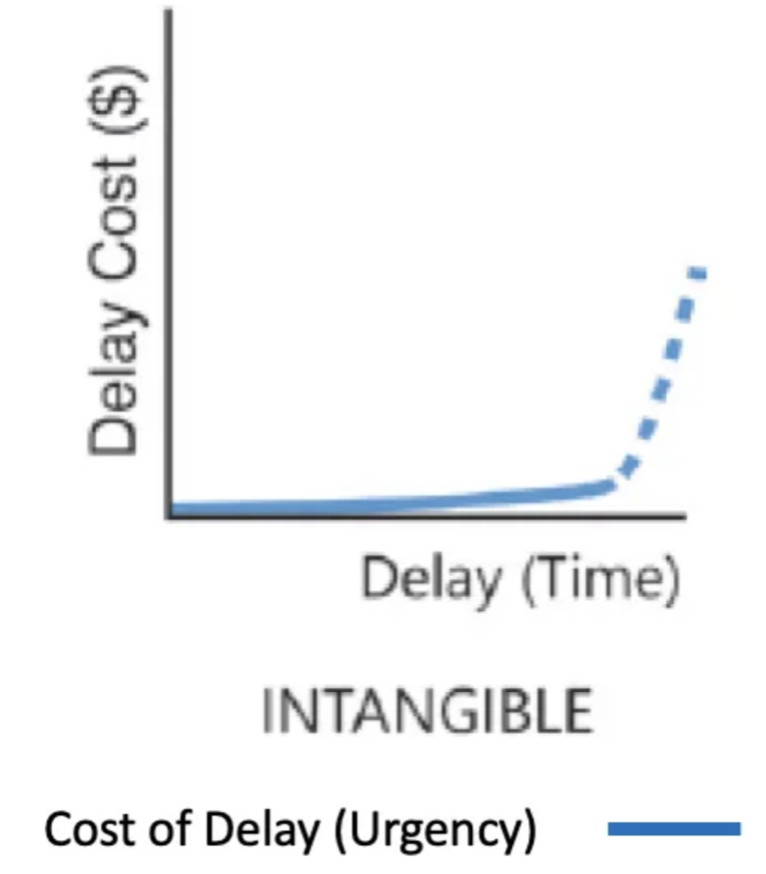
Classes of Service vs. Priorities
Classes of Service and priorities are two complementary but distinct concepts.
- Priorities define the order in which a work item is performed (example: Urgent, High, Medium, Low).
- Classes of Service define how a work item should be handled, taking into account urgency, business impact and cost of delay.
The combination of the two allows you to make objective decisions on work management and optimize cycle time and value delivery.
Can a Class of Service have different priorities?
Yes, a Class of Service can contain work items with different priorities, because the Class of Service defines how a task is handled, while the priority determines the order of support.
In other words:
- The Class of Service sets a management framework (deadlines, SLA, level of commitment).
- Priority adjusts the order of processing in a queue.
Examples:
- Expedite
- P0 (Critical) → Blocking production incident.
- P1 (High) → A security vulnerability detected but not yet exploited.
- Fixed Delivery Date
- P1 (High) → Regulatory audit with risk of sanction if not processed on time.
- P2 (Medium) → Delivery of a new functionality for a marketing campaign.
- Standard
- P1 (High) → A request from a VIP customer.
- P3 (Low) → A minor update to an internal dashboard.
- Intangible
- P2 (Average) → Reduction of technical debt which slows down development.
- P4 (Very Low) → Exploratory research on a new technology.
What are the benefits of having several priorities per Class of Service?
- Better responsiveness → The team knows which urgent task to tackle first.
- Effective management of the cost of delay → Allows you to optimize decision-making.
- Greater flexibility → The same Class of Service can adapt to business realities.
Classes of Service & SLA (Service Level Agreement)
An SLA, or Service Level Agreement, is a formal or contractual commitment between a service provider and its customer. It precisely defines the service objectives that the supplier must achieve.
- The SLA is often a legally binding document or part of a service contract.
- It is used in customer-supplier relationships (internal or external).
- SLAs define precise values in terms of time, quality or availability. Example: “90% of level 1 tickets should be resolved in less than 4 hours. »
- If the SLA is not met, this may result in financial penalties, refunds, or adjustments in agreements.
Example of SLA: A web host guarantees 99.9% availability of its servers over a given period.
Under Classes of Service, SLAs can be defined specifically to reflect the priorities and objectives related to each type of work. Here are examples and ideas of SLAs tailored to classes of service.
Expedite
- Delay-based SLA:
- “Respond to immediate emergency requests within 15 minutes. »
- “Resolve 95% of emergency tickets immediately in less than 2 hours. »
- SLA based on priority:
- “Immediate emergency tickets should be taken care of before anything else on the Kanban board. »
Fixed Delivery Date
- SLA based on lead times:
- “Complete tasks with a set date at least 24 hours before their due date. »
- SLA based on percentages:
- “Guarantee that 99% of fixed deadline tasks are completed within agreed deadlines. »
- SLA for progress monitoring:
- “Reassess the status of tasks with a fixed deadline of D-3 to guarantee their progress. »
Standard
- SLA based on cycle time:
- “Guarantee that the average cycle time of standard tasks does not exceed 5 working days. »
- SLA based on percentages:
- “Complete 80% of standard tasks within 5 days. »
- SLA based on wait time:
- “Reduce the average time in the ‘Waiting’ column to less than 48 hours for standard tasks. »
Intangible
- SLA based on priority balance:
- “Reserve at least 15% of team capacity each week for intangible tasks. »
- Progress-based SLA:
- “Complete at least 10 continuous improvement items per quarter. »
Classes of Service & SLE (Service Level Expectation)
SLEs (Service Level Expectations) are service level expectations used to set internal performance objectives. Unlike SLAs (Service Level Agreements), which are formal commitments, SLEs serve as an internal reference to help teams improve the predictability and fluidity of work.
Within the framework of Classes of Service, SLEs make it possible to set realistic expectations in terms of cycle times, processing times and respect for priorities.
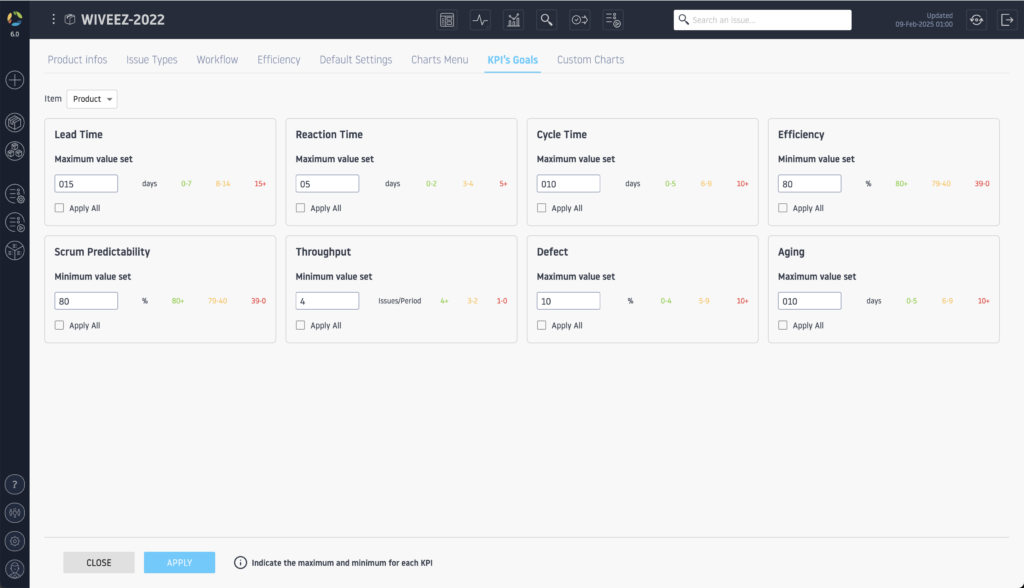
Each Class of Service can have a specific SLE to ensure monitoring adapted to its level of criticality and its business impact.
Expedite
- Objective: Process tasks as soon as possible (often while interrupting other tasks).
- SLE: “90% of urgent tasks must be completed in less than 24 hours. »
- Key Metric: Cycle time ≤ 1 day.
- For what ? : These tasks have an exponential cost of delay and must be processed with absolute priority.
Fixed Delivery Date
- Objective: Meet a specific deadline without necessarily being processed immediately.
- SLE: “95% of tasks with a fixed deadline must be completed at least 2 days before the deadline. »
- Key metric: Delivery time vs deadline.
- For what ? : Helps ensure that commitments are met without a last-minute rush.
Standard
- Objective: Ensure a constant and predictable flow of regular tasks.
- SLE: “80% of standard tasks must be completed in less than 7 days. »
- Key Metric: Median cycle time.
- For what ? : Ensures that the backlog is processed smoothly and stably.
Intangible
- Objective: Carry out tasks that provide long-term value without interrupting critical flows.
- SLE: “70% of continuous improvement tasks must be completed in less than 15 days. »
- Key Metric: Average cycle time + % of tasks completed each month.
- For what ? : These tasks often get pushed back, so an SLE helps prevent them from stagnating indefinitely.
In which activities should Service Classes be used?
Classes of Service can be used in many areas of activity, when it comes to prioritizing, organizing and optimizing a workflow.
- Software & IT Development
- Project management and PMO
- Customer Service & Support
- Health & Hospitals
- Industry & Supply Chain
- Marketing & Communication
- Finance & Banking
- …
Can we use Service Classes in Scrum?
Although Scrum Guide does not explicitly mention them in its framework, Service Classes can be used effectively in a Scrum project.
Their integration makes it possible to optimize backlog management, intelligently prioritize Sprint elements and improve the predictability of deliveries.
Service Classes can mainly fit into three aspects of Scrum:
- Management of the Product Backlog (prioritization and structuring of elements).
- Sprint planning and execution (management of work in progress).
- Monitoring and continuous improvement (performance analysis and predictability).
Apply Classes of Service to the Product Backlog
The Product Owner can use Service Classes to better organize and prioritize backlog items based on their urgency and impact.
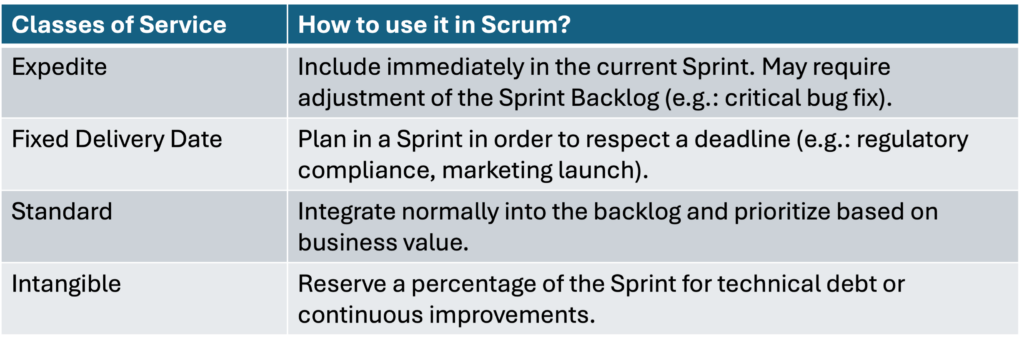
Example :
A Product Owner decides that 20% of the backlog items in each Sprint will be dedicated to Intangible Work (reduction of technical debt), while ensuring that Fixed Emergency tasks are planned before their deadline.
Integrate Classes of Service into Sprint Planning
During Sprint Planning, Developers and the Product Owner can assign a Class of Service to the selected User Stories. This helps balance the Sprint between emergencies, fixed-date commitments and regular work.
- Expedite → Will be processed as a priority in the Sprint.
- Fixed Delivery Date → Is placed with special attention to ensure that it is delivered on time.
- Standard → Makes up the majority of the Sprint.
- Intangible → Reserved to improve product quality.
👉 Tip: Defining a WIP (Work In Progress) limited by class of service in the Sprint helps avoid congestion.
Monitoring Classes of Service in the Daily Scrum and Sprint Review
During Daily Scrums, the team can monitor the progress of User Stories based on their service class.
- Are Expedite items well supported?
- Are the Fixed Dates moving fast enough to meet the deadline?
During the Sprint Review, the team can analyze the distribution of work by service class and adjust future Sprints accordingly.
Conclusion
Service Classes provide a structuring framework for making informed decisions and improving workflow management, to enable teams to gain predictability, responsiveness and efficiency.
Associated with SLA and SLE, they make it possible to define clear expectations and measure flow performance.
Even in a Scrum framework, where the Sprint is a time commitment, Service Classes help to structure the backlog, balance the load and ensure that critical tasks are taken into account. They also make it possible to optimize cycle time and ensure adequate treatment of emergencies without disrupting the entire Sprint.
The main thing to remember:
- Classes of Service improve flow prioritization and optimization.
- They are associated with SLA and SLE for monitoring and continuous improvement.
- They can be integrated into a Scrum framework, in order to structure and balance the work.
- They enable objective decision-making, thus reducing delays and blockages.



